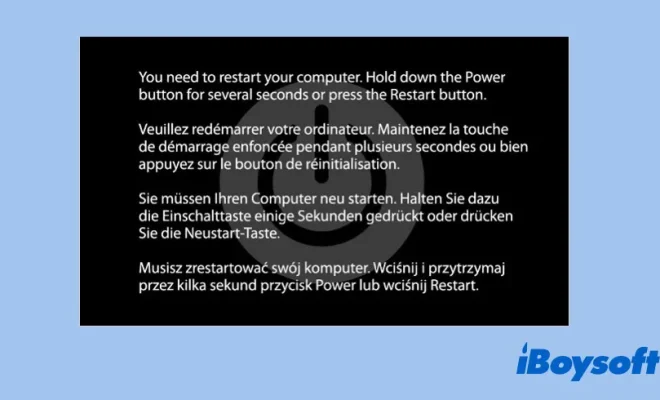Troubleshooting Mac OS X Kernel Panics

If you’re a Mac user, you may have encountered a Kernel Panic at some point. A Kernel Panic is a critical error that occurs when the operating system detects an issue that it cannot recover from. When this happens, your Mac will display a message in multiple languages telling you to restart your computer.
Kernel Panics can be caused by a variety of issues, including hardware failures, software conflicts, and outdated drivers. If you’re experiencing frequent Kernel Panics, it’s important to identify the cause of the issue and address it as soon as possible.
Here are some steps you can take to troubleshoot Kernel Panics on your Mac:
Step 1: Check for software updates
Before you start troubleshooting, make sure that your Mac is up to date with the latest software updates. To check for updates, go to the Apple menu and select “Software Update”. If any updates are available, install them and restart your computer.
Step 2: Check for incompatible software
Sometimes, incompatible software can cause Kernel Panics. If you’ve recently installed any new software, try uninstalling it and see if the problem persists. You can also check the software manufacturer’s website to see if there are any known compatibility issues with your version of macOS.
Step 3: Check for hardware issues
If software isn’t the issue, it’s possible that there’s a hardware problem causing the Kernel Panics. You can run Apple Diagnostics to check for any hardware issues. To do this, restart your Mac and hold down the “D” key until the Apple Diagnostics screen appears. Follow the on-screen instructions to run the diagnostic tests.
Step 4: Reset PRAM/NVRAM
Resetting PRAM (Parameter Random Access Memory) or NVRAM (Non-Volatile Random Access Memory) can sometimes resolve Kernel Panics. To reset PRAM/NVRAM, restart your Mac and hold down the “Option”, “Command”, “P”, and “R” keys simultaneously until you hear the startup sound twice.
Step 5: Reinstall macOS
If none of the above steps work, you may need to reinstall macOS. Before doing so, make sure to back up all of your important files. To reinstall macOS, restart your Mac and hold down the “Command” and “R” keys until the Apple logo appears. Follow the on-screen instructions to reinstall macOS.
Conclusion
Kernel Panics can be frustrating, but they can also be resolved with some troubleshooting. By following these steps, you can identify the cause of the issue and address it accordingly. If you’re still experiencing Kernel Panics after trying these troubleshooting steps, it may be time to contact Apple Support for further assistance.






